On the way to Bastogne, I passed a sign pointing to a castle. I was feeling adventurous, so I went 10 miles out of my way to visit the Bourscheid Castle. It was well worth the detour.
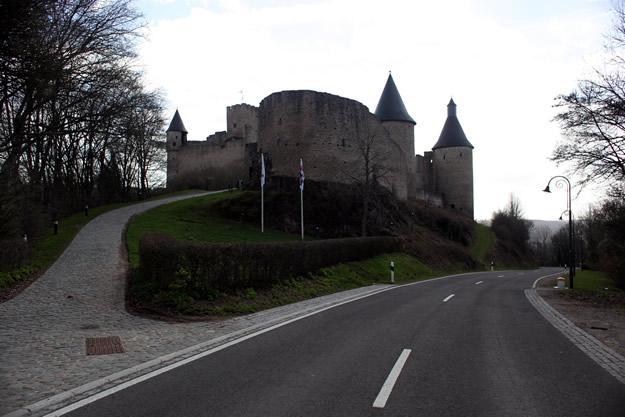
As you approach the castle, there is a superb spot for panoramic shots of the castle and valley.
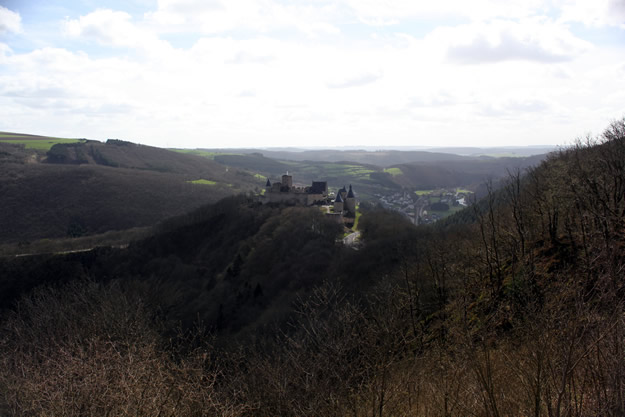
Covering nearly 130,000 square feet, the Bourscheid Castle sports 11 watchtowers, one keep, and several rings of walls. It sits 165 yards above the winding River Sûre. The last of the Bourscheids died in 1512, but the spot had seen occupation by numerous groups before and after the Bourscheid reign. Evacuations have revealed evidence of Ottonian, Carolingian, Merovingian, and Roman era fortifications. After the Bourscheids, several groups occupied it until the capture by French revolutionary troops in 1794-1795. The Luxembourg government took ownership in 1972 after 150 years of private ownership.
The castle is a goldmine for medieval fortifications. Where there was once a drawbridge, the visitor immediately comes across loops for bows.

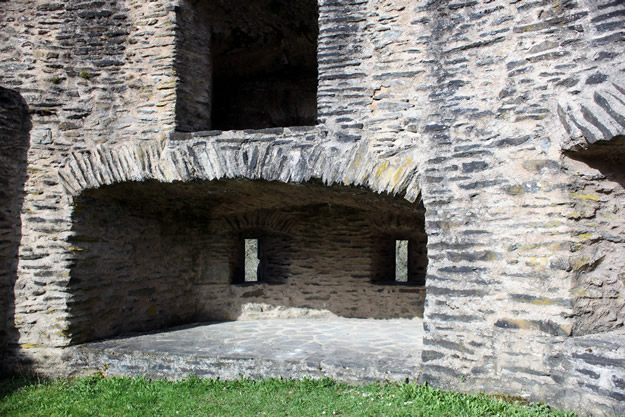
The way the wall funnels to a narrow opening provided superb cover for archers attacking targets outside the walls.
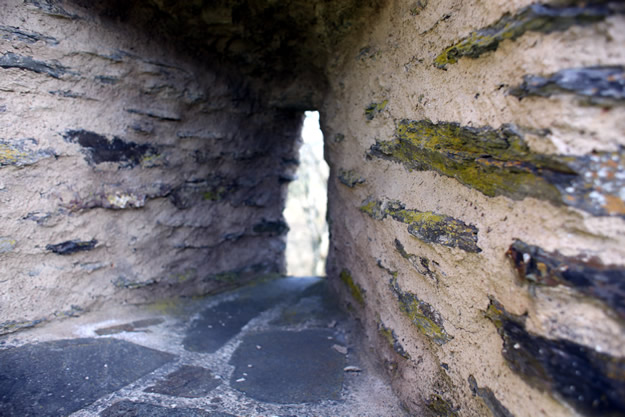
The most prominent fortifications are the multiple sets of walls.

The internal fourteenth-century shield walls rest upon a massive rock, which helps defend against sappers. In addition, it made the walls even higher to defend against ladders.
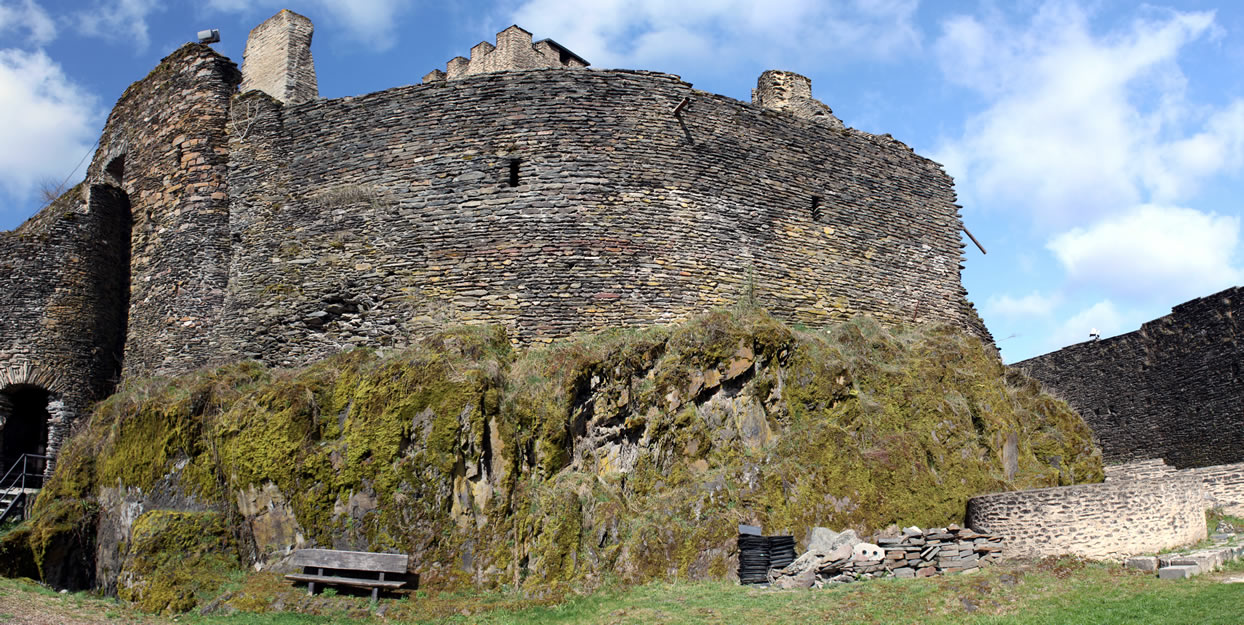
This video provides more perspective on the internal shield walls.
From these walls, you can see the lower area of the castle.

Along with the inner and outer walls, are the defensive towers.
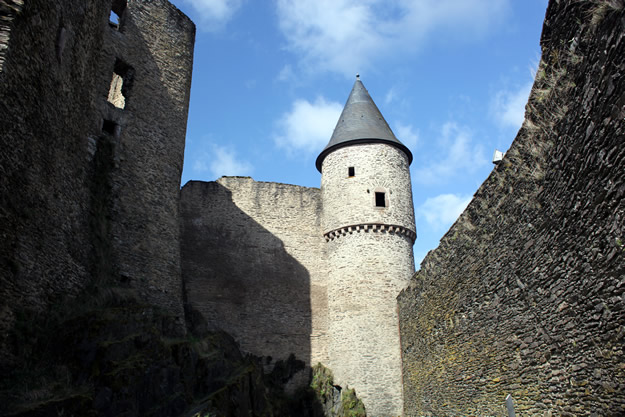
These towers are all open on the inside of the castle. There are no stairs, as defends would use ladders to climb to the heights and defend.
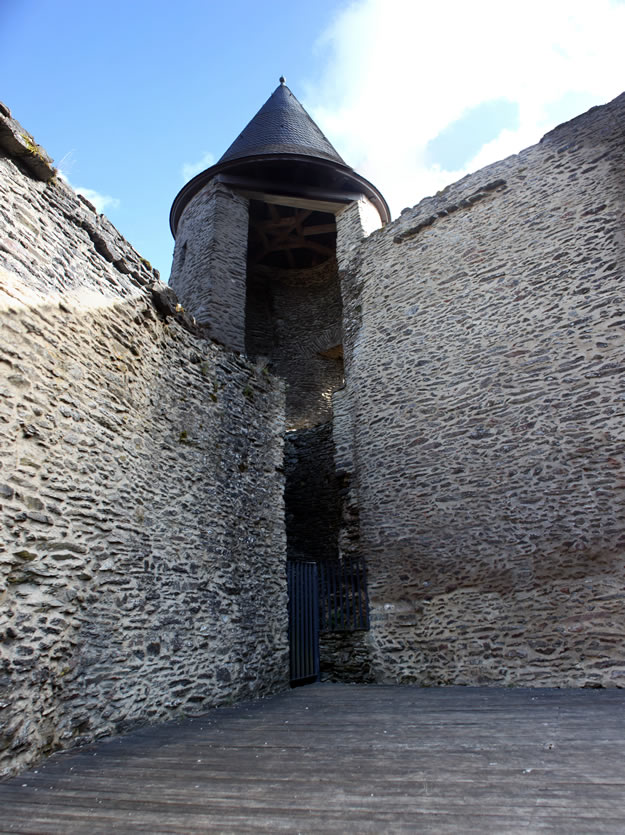
The innermost part of the castle features the keep, the last defense against attackers.

When you stand below it, it is intimidating.
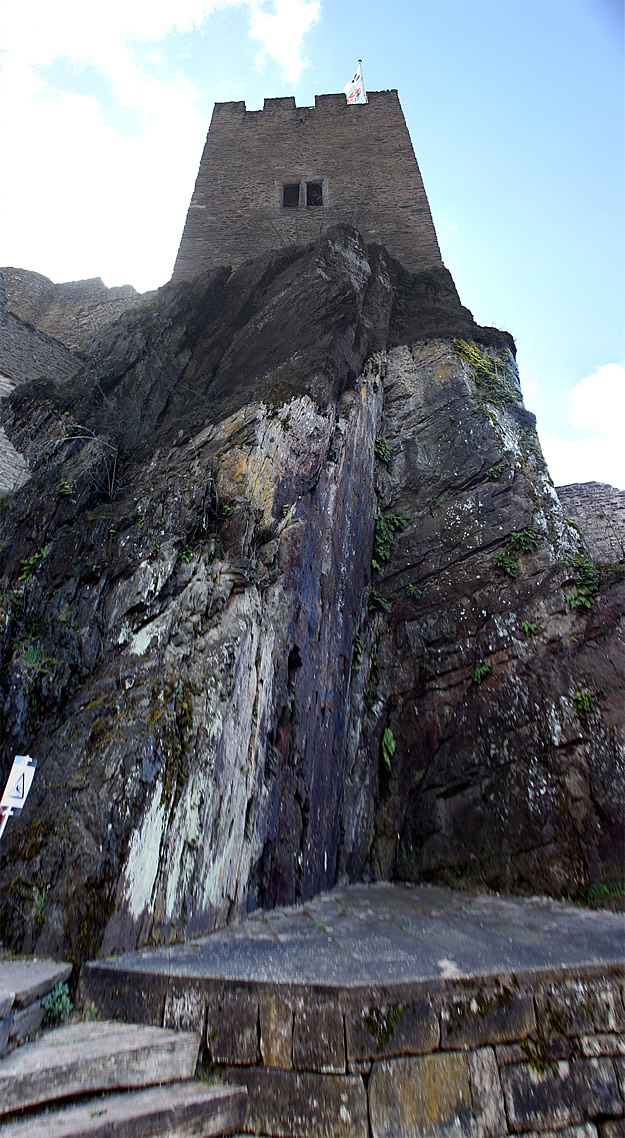
Aside from sitting on an elevated position, the keep has a superb view of the River Sûre and the valley below.
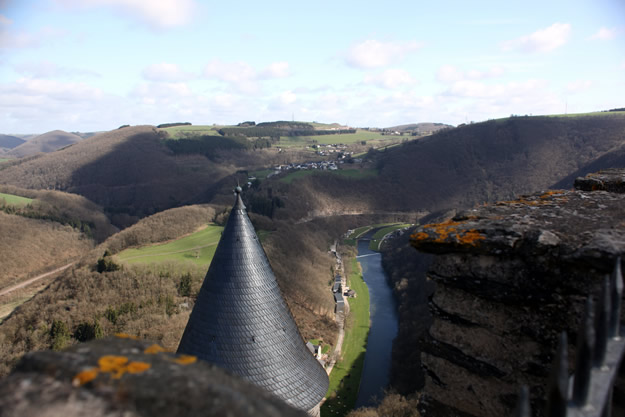
This video provides better perspective of the River Sûre.
The oldest fortifications visible to the visitor date back to the eleventh-century, around the period where stone began to replace wood in medieval defenses.
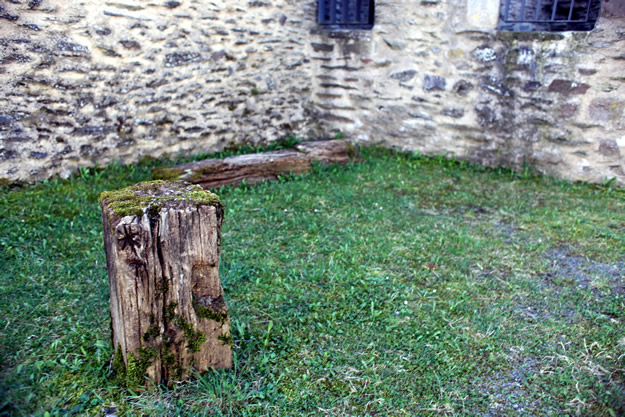
This video provides a better perspective of the eleventh-century remains.
The Luxembourg government has put together a superb audio tour available in English. It offers descriptions of the castle from a modern-day perspective, as well as descriptions from Victor Hugo who visited the castle in the nineteenth-century.
